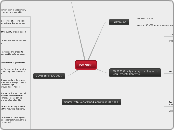ISO 9000
Background
published in 1987
based on BS 5750 series standards from BSJ
ISO 9001 Quality management systems Requirements Contents
Foreword
Intro
Requirements
Scope
Nominative Reference
Terms and definitions
Quality Management System
Management Responsibility
Resource Management
Product Realization
Measurement, analysis and improvement
Tables of Correspondence between ISO 9001 and other standars
Bibliography
Adoption
Dec 2000: 450 000 certificates
Dec 2004:660 000 certificates
Dec 2009: 1mil certificates
Summary of ISO 9001
The quality policy is a formal statement from management, closely linked to the business and marketing plan and to customer needs.
The quality policy is understood and followed at all levels and by all employees. Each employee works towards measurable objectives.
The business makes decisions about the quality system based on recorded data.
The quality system is regularly audited and evaluated for conformance and effectiveness.
Records show how and where raw materials and products were processed to allow products and problems to be traced to the source.
The business determines customer requirements.
The business has created systems for communicating with customers about product information, inquiries, contracts, orders, feedback, and complaints.
When developing new products, the business plans the stages of development, with appropriate testing at each stage. It tests and documents whether the product meets design requirements, regulatory requirements, and user needs.
The business regularly reviews performance through internal audits and meetings. The business determines whether the quality system is working and what improvements can be made. It has a documented procedure for internal audits.
The business deals with past problems and potential problems. It keeps records of these activities and the resulting decisions, and monitors their effectiveness.
The business has documented procedures for dealing with actual and potential nonconformances (problems involving suppliers, customers, or internal problems).
The business:
makes sure no one uses a bad product,
determines what to do with a bad product,
deals with the root cause of problems, and
keeps records to use as a tool to improve the system.
